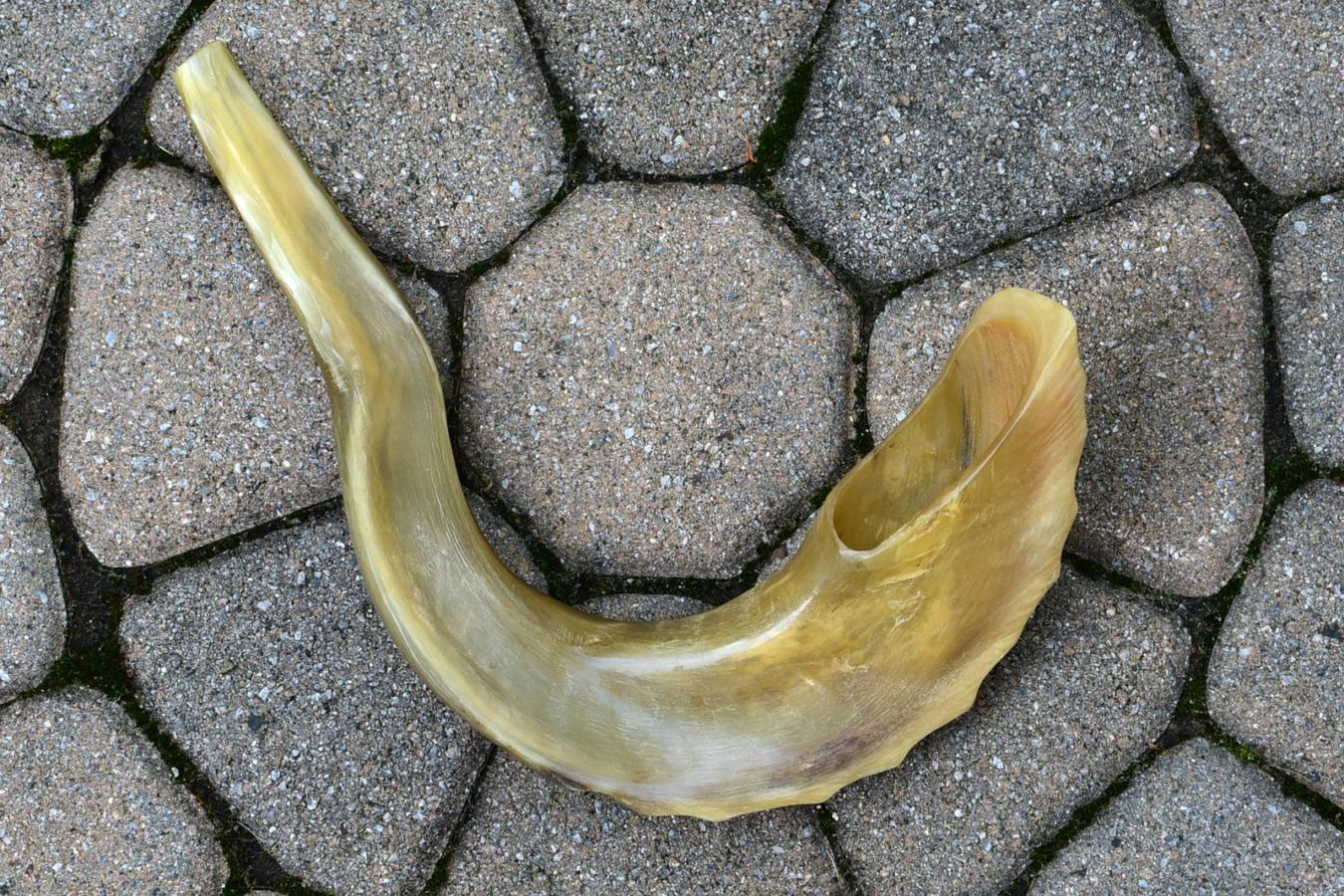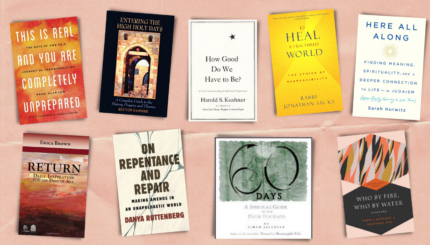“Who shall live and who shall die…” This haunting phrase connotes the gravitas of the High Holiday liturgy. It comes from Unetaneh Tokef, a piyyut (liturgical poem) recited on Rosh Hashanah and Yom Kippur at the pinnacle of the worship service, during the Musaf repetition of the Amidah. Its sobering message, that any one of us might die in the coming year, invites worshippers into a moment of uncertainty and self-reflection. If those in attendance have managed to remain impassive to the liturgy up until this moment, Unetaneh Tokef shakes them from their slumber, inviting questions, fear, and doubt. Knowing that I might die at any moment can lend urgency to the questions: Was this past year one I am proud of? Do I really have the capacity to do true teshuvah (to repent) and make changes?
And then, a few paragraphs later in the liturgy, in a moment when we are feeling truly vulnerable, we encounter another piyyut, with a shockingly different tone. V’chol Ma’aminim literally means “We All Believe.” Here is a bit of it:
We all believe that God is faithful…knows our deepest feelings…is the steadfast redeemer…
Read the full text of V’chol Ma’aminim in Hebrew on Sefaria.
The theme of this part of the service pivots abruptly from uncertainty (who shall live and who shall die?) to complete faith. Now, rather than wondering out loud our fates for the coming year, knowing that perhaps not all of us will come together again a year hence, we proclaim as a whole (usually in call-and-response with a cantor) statements of utter certainty and faith. God is in charge, there is order in the universe.
With your help, My Jewish Learning can provide endless opportunities for learning, connection and discovery.
The change in message is a jolt, but a welcome one. From the depths of uncertainty we call out the steadfast faith we wish we felt. We together take a deep breath and speak into being the order we crave in our chaotic, uncertain lives.
Even the form of the poem, attributed to the paytan (poet) Yannai (perhaps between the 5th and 7th centuries), conveys a message of order and certainty. It’s an acrostic, with a theological statement for each letter of the 21 letters of the alphabet. Sometimes it is laid out in a series of seven stanzas, a perfect number (evocative of the wholeness of God’s creation — brought into being by six days of work and one of rest). Repetitive patterns, rhythmic phrasing, and alliteration — all emphasize the predictability of the natural order. One by one, the verses pronounce God truthful, eternal, singular, a just judge.
At a fragile time like the High Holidays, which are an opportunity for each individual to rehearse his or her own death (a morbid but also deeply meaningful exercise), there is a strong need to confess certainty and belief. The poem seems designed to convey these in every way, but in light of our own experience of a world that is often chaotic and cruel, how can we affirm we “believe” each statement?
The answer is that “belief” might not mean what we think it means. In Hebrew, the root of the word ma’aminim, “we believe,” is more connected to faith than proof of fact. When we are feeling vulnerable we take a leap of faith, resting our minds on God who protects us, upholds justice, and makes sure that we will be cared for.
This period in the Jewish calendar is about more than powerful poetic prayer; it calls each of us to become better versions of ourselves. In parallel, we can imagine how each of our personal efforts can begin to bring the world itself toward wholeness. We can read these verses as a profession of belief not in the existence of a perfectly controlled, ordered universe — but in the possibility of that version of our world, ourselves, and our God. For example, we might fear that we have done something unforgivable, so we remind ourselves that Judaism teaches of a God who is patient, even overlooking the sins of those who are rebellious. Or, we might be filled with self-doubt after a challenging year of disappointments, so we seek comfort in the sturdy reminder that God is the One before whom all are equal.
It is challenging to read this poetic prayer as a literal declaration of belief. It might even be painful to say those words out loud, as we gaze around our broken, messy world. But V’chol Ma’aminim can be read instead as an aspirational proclamation of hope — a commitment to discover light in the darkness, and perhaps to manufacture it for ourselves.
When congregations gather together on the High Holidays to reflect on the passage of time, the services are punctuated with poetic moments such as this, when individuals can call out their deepest yearnings. We follow the guidance that Yannai left for us 1500 years ago, and speak out loud of the justice and order and we crave. In doing so together, we are invited to hear the way in which all of our hopes and wishes reverberate in unison, and together we are invited to bring the order and stability of our dreams into reality.



